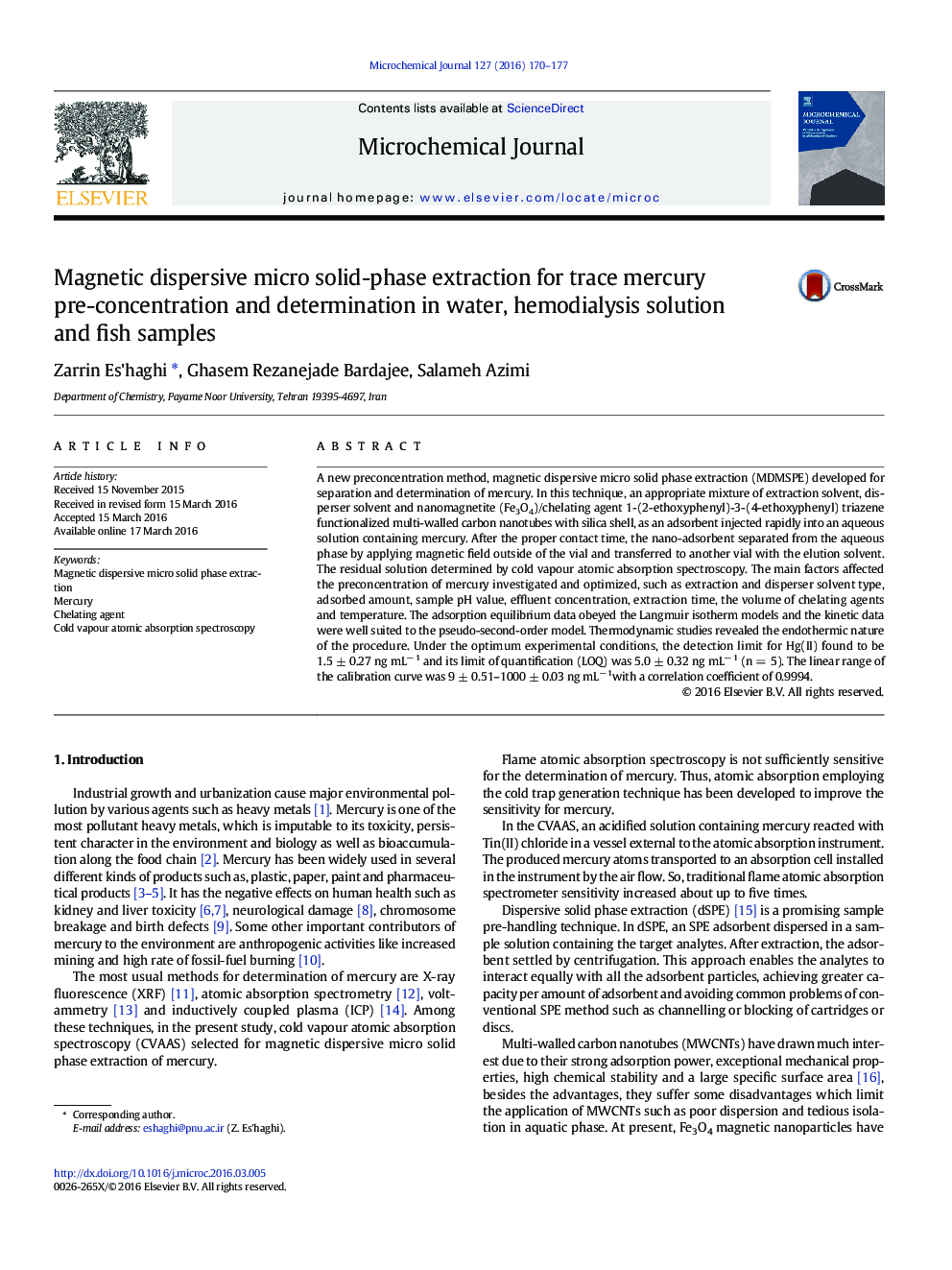| کد مقاله | کد نشریه | سال انتشار | مقاله انگلیسی | نسخه تمام متن |
|---|---|---|---|---|
| 1227516 | 1494867 | 2016 | 8 صفحه PDF | دانلود رایگان |
• A magnetic chelating agent 1-(2-ethoxyphenyl) -3-(4-ethoxyphenyl) triazene functionalized multi-walled carbon nanotubes with silica shell is developed as a sorbent.
• Cold vapour atomic absorption spectroscopy is used for analysis.
• Hg(II) has been selected as target compounds.
• Target ion is determined in water, hemodialysis solution and fish samples.
A new preconcentration method, magnetic dispersive micro solid phase extraction (MDMSPE) developed for separation and determination of mercury. In this technique, an appropriate mixture of extraction solvent, disperser solvent and nanomagnetite (Fe3O4)/chelating agent 1-(2-ethoxyphenyl)-3-(4-ethoxyphenyl) triazene functionalized multi-walled carbon nanotubes with silica shell, as an adsorbent injected rapidly into an aqueous solution containing mercury. After the proper contact time, the nano-adsorbent separated from the aqueous phase by applying magnetic field outside of the vial and transferred to another vial with the elution solvent. The residual solution determined by cold vapour atomic absorption spectroscopy. The main factors affected the preconcentration of mercury investigated and optimized, such as extraction and disperser solvent type, adsorbed amount, sample pH value, effluent concentration, extraction time, the volume of chelating agents and temperature. The adsorption equilibrium data obeyed the Langmuir isotherm models and the kinetic data were well suited to the pseudo-second-order model. Thermodynamic studies revealed the endothermic nature of the procedure. Under the optimum experimental conditions, the detection limit for Hg(II) found to be 1.5 ± 0.27 ng mL− 1 and its limit of quantification (LOQ) was 5.0 ± 0.32 ng mL− 1 (n = 5). The linear range of the calibration curve was 9 ± 0.51–1000 ± 0.03 ng mL− 1with a correlation coefficient of 0.9994.
Journal: Microchemical Journal - Volume 127, July 2016, Pages 170–177
